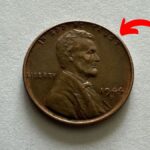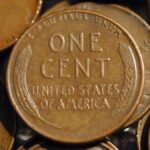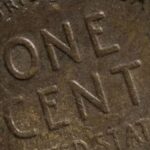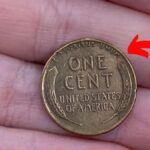The world of coin collecting holds many treasures, and among them, the 1937 Lincoln wheat penny stands as a fascinating piece of American numismatic history. Whether you’re a seasoned collector or someone who just discovered an old penny, understanding its value and characteristics can be both enlightening and potentially rewarding.
The Significance of Mintmarks
One of the most crucial aspects of identifying a 1937 wheat penny’s value lies in understanding its mintmark. Located beneath the date on the coin’s obverse (front) side, these tiny letters tell us where the penny was minted. A “D” indicates production at the Denver Mint, while an “S” shows it was struck in San Francisco. Interestingly, the absence of a mintmark reveals the coin was produced at the Philadelphia Mint, which didn’t use mintmarks on Lincoln cents during this period.
Philadelphia Mint (No Mintmark) Values
The Philadelphia Mint produced the largest quantity of 1937 pennies, with over 309 million pieces struck. Due to this high production number, these coins are relatively common today. A typical circulated 1937 Philadelphia penny in worn condition typically holds a value between 5 to 10 cents. However, uncirculated specimens can command $1 or more. The most remarkable example, graded MS-68 Red by Professional Coin Grading Service (PCGS), achieved an impressive $7,200 at auction in 2019, demonstrating how condition significantly impacts value.
Denver Mint (D Mintmark) Specimens
The Denver Mint’s production of 50.43 million pennies in 1937 makes these variants somewhat scarcer than their Philadelphia counterparts. A circulated 1937-D penny typically ranges in value from 7 to 20 cents, while uncirculated pieces start at around $1.50. The record holder for this mintmark is an MS-68 Red specimen that sold for an astounding $17,250 in 2006, highlighting the premium placed on exceptional preservation.
San Francisco Mint (S Mintmark) Pieces
With the lowest mintage of the three facilities at 34.5 million pieces, 1937-S pennies are the scarcest of the regular issues. Circulated examples typically fetch 10 to 20 cents, while uncirculated specimens start at approximately $2. A particularly well-preserved specimen, graded MS-67+ Red by PCGS, achieved $2,350 at auction in 2014.
The Special Case of Proof Pennies
The U.S. Mint also produced a limited number of proof pennies in 1937, specifically designed for collectors. These special strikes, numbering only 9,320 pieces, feature exceptional detail and a brilliant, reflective finish. Starting at around $30, proof specimens can command significant premiums, with one PR-67 Deep Cameo example selling for $13,225 in 2009.
Notable Error Varieties
Error coins often attract significant collector interest, and 1937 pennies feature several notable varieties. Doubled die errors, showing distinct doubling in various design elements, can range from $5 to $25 depending on the variety and condition. Off-center strikes, where the design isn’t properly centered on the planchet, can fetch $20 for minor misalignments to $100 or more for dramatic examples that still show the complete date.
Other Collectible Varieties
Die breaks and chips, resulting from aging dies, can create interesting collecting opportunities. While minor die breaks have nominal value, significant breaks affecting major design elements can command $10 to $25 or more. The “BIE” variety, showing a vertical die break between the B and E in LIBERTY, holds special appeal for collectors and typically sells for $5 or more. Repunched mintmarks and clipped planchets represent other collectible varieties, with values ranging from $3 to $20 depending on their characteristics.
The VDB Connection
Many collectors ask about the VDB initials on 1937 pennies. These letters, representing designer Victor David Brenner, appear in tiny form on the obverse under Lincoln’s shoulder. Originally placed prominently on the reverse in 1909, they were removed due to public controversy before being restored in their current, more subtle position in 1918. All 1937 pennies carry these initials, making them a standard feature rather than a valuable variety.
Determining Your Penny’s Value
The key to accurately assessing a 1937 penny’s value lies in understanding its condition, mintmark, and any potential error features. While most circulated examples hold modest value, exceptional specimens and those with interesting variations can command significant premiums. Professional grading can be worthwhile for coins that appear to be in superior condition or show unusual characteristics.
Conclusion
The 1937 Lincoln wheat penny represents an interesting chapter in American coinage, offering numerous collecting opportunities across various price points. Whether you’re interested in mint marks, error varieties, or exceptional preservation, these coins provide fascinating insights into numismatic history while potentially holding surprising value. As with all collectibles, condition and authenticity remain paramount in determining true worth.






